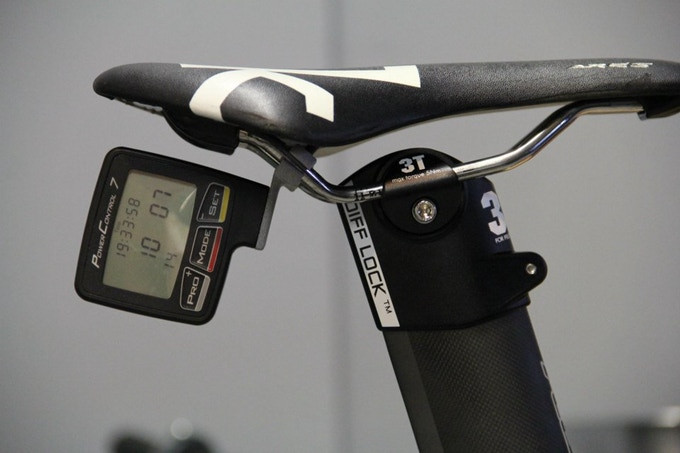Track cycling, also known as velodrome racing, presents unique challenges and regulations when it comes to using technology like bike computers. While cyclists in other disciplines might rely heavily on visible cycle computer displays, track racing often prohibits them. This article delves into the specifics of using a Bike Gps Monitor in velodrome settings, exploring the rules, limitations of GPS technology in this environment, and superior alternatives for accurate data collection.
The Union Cycliste Internationale (UCI), the world governing body for sports cycling, has clear regulations regarding electronic devices in track races. Rule 3.2.005 of the UCI Cycling Regulations for Track Races explicitly states:
Riders may carry no object on them or on their bicycles that could drop onto the track. They may not bear or use on the track any music player or radio communication system.
In addition, any electronic device with a display (for instance speedometer or powermeter) must be hidden so that it cannot be read by the riders.
This rule is crucial for safety and fair play in track cycling. Visible displays, including those on a bike GPS monitor, are generally not allowed during races and must be concealed. Initially, riders might have gotten away with covering the display, but regulations have become stricter, often forbidding handlebar-mounted devices altogether during competition. For training purposes, however, cyclists can utilize these devices. Data recording during races, if desired, often necessitates creative solutions like under-saddle mounts to keep the device hidden and compliant with UCI regulations.
 Under saddle bike computer mount
Under saddle bike computer mount
A bike computer mounted under the saddle for data recording during track cycling, ensuring compliance with UCI regulations by keeping the display hidden.
While a bike GPS monitor is a common tool for outdoor cycling, its effectiveness diminishes within the confines of a velodrome, especially an indoor one. GPS, or Global Positioning System, relies on satellite signals to determine location and track movement. However, the inherent nature of GPS technology and velodrome riding introduce accuracy limitations. GPS accuracy can be compromised when rapidly changing direction on the steep banks of a velodrome. If you examine a GPS track from a device used on a velodrome or even on a sharply winding road, you will notice that the plotted path often cuts corners. This is because GPS calculates speed based on straight-line distance over time intervals, which deviates from the actual curved path traveled on a track.
For precise speed and distance measurement in track cycling, wheel speed sensors offer a more reliable solution compared to a bike GPS monitor. Wheel speed sensors directly measure the rotation of the wheel, providing highly accurate data on wheel speed. This is particularly important on a velodrome where small variations in speed and distance can be critical for performance analysis and training. While wheel speed is not exactly the same as the rider’s speed due to the lean angle and differing path radii of the wheels and the rider, it offers superior precision compared to GPS in this specific environment.
Understanding the distinction between wheel speed and rider speed becomes relevant in advanced applications like aerodynamics testing. In such cases, the rider’s velocity relative to the surrounding air is the key metric, as the rider constitutes the majority of aerodynamic drag. For these scenarios, while wheel speed data is useful, more sophisticated methods might be needed to accurately determine the rider’s true speed and aerodynamic performance. However, for general performance tracking and training on the velodrome, wheel speed sensors, used in conjunction with a bike computer (when permitted and appropriately mounted), provide the necessary accuracy and reliability that a bike GPS monitor struggles to deliver in this unique cycling discipline.

